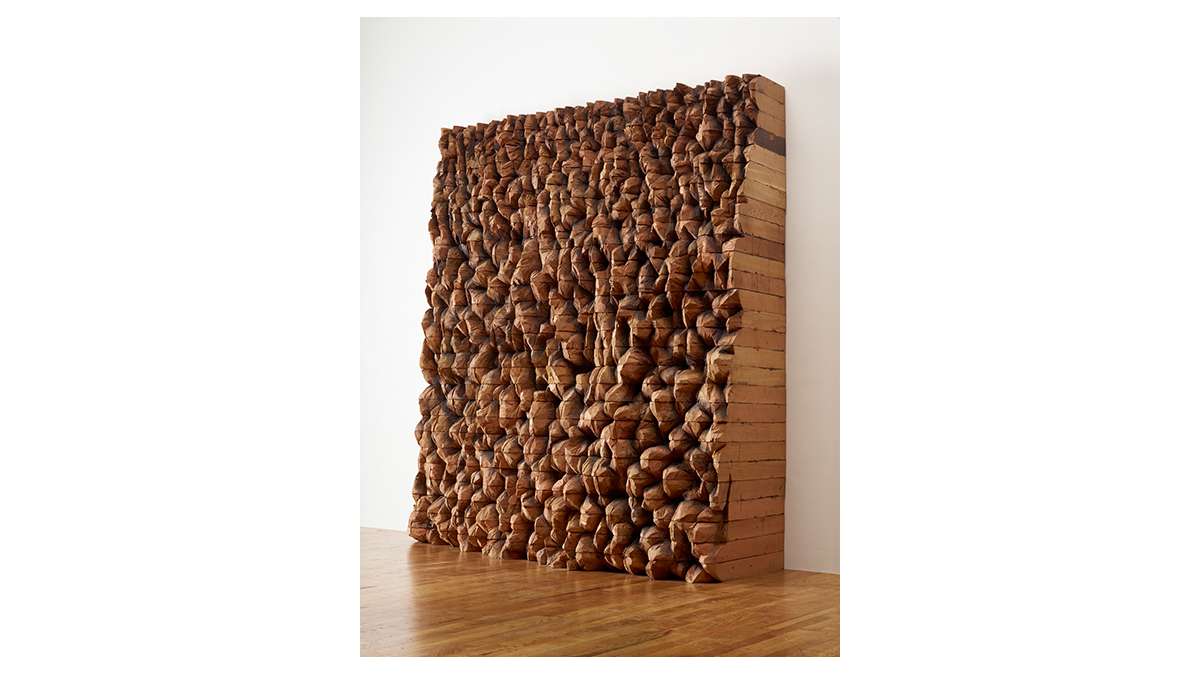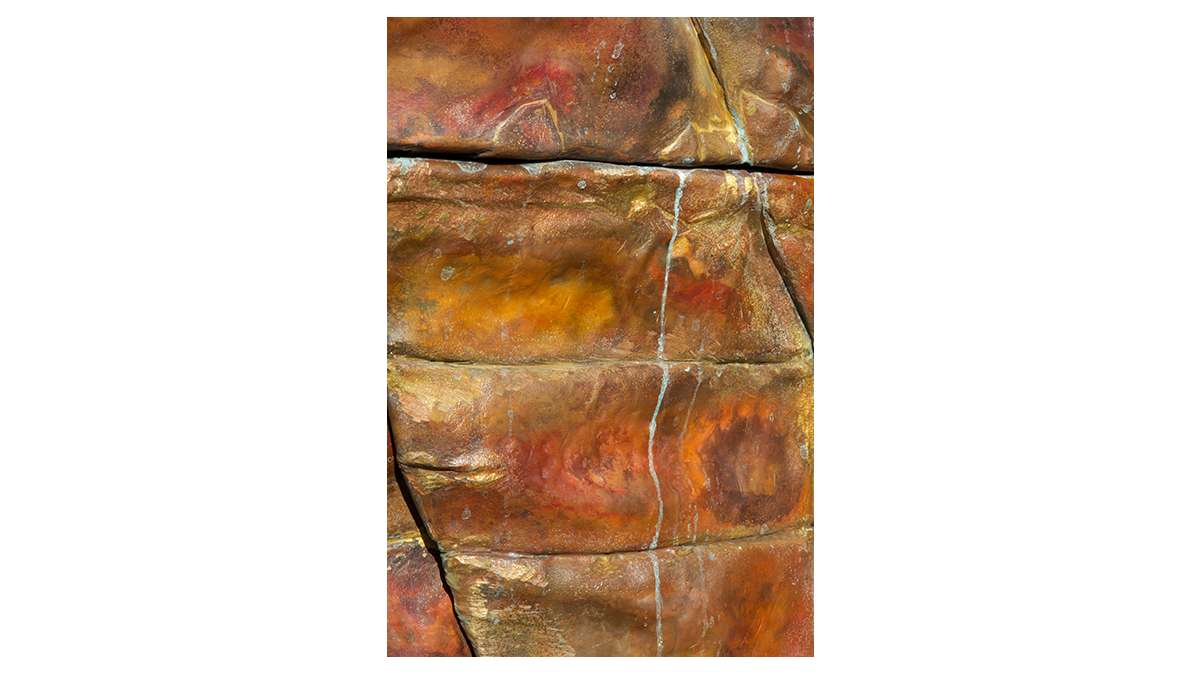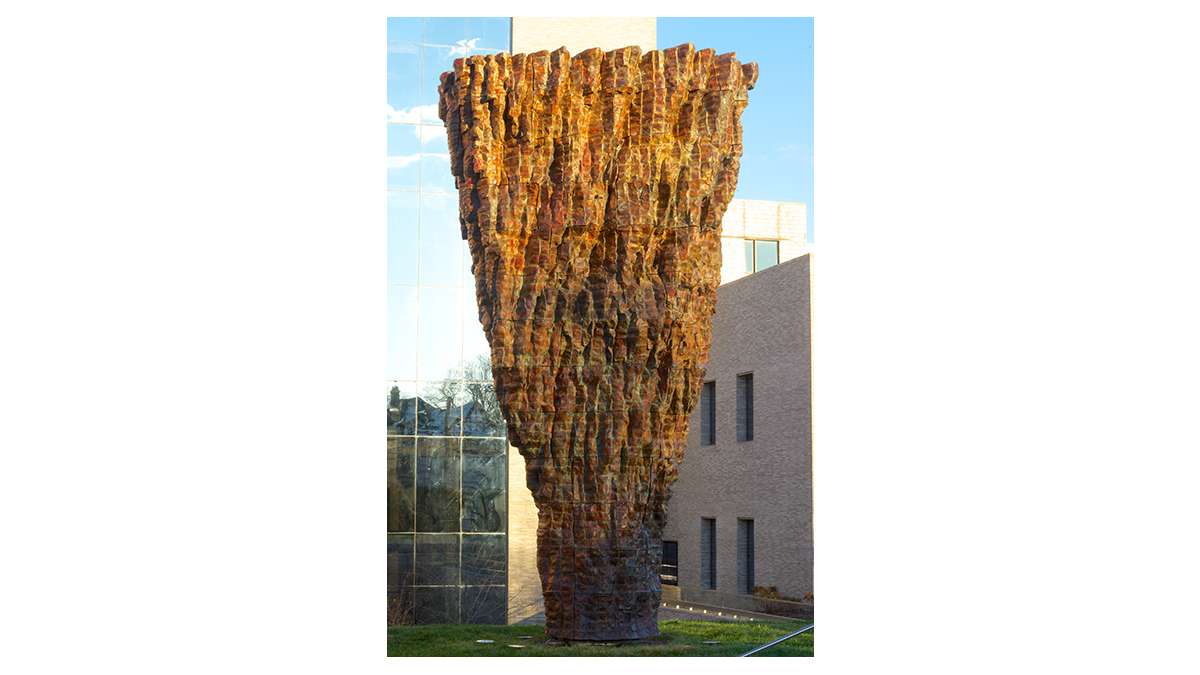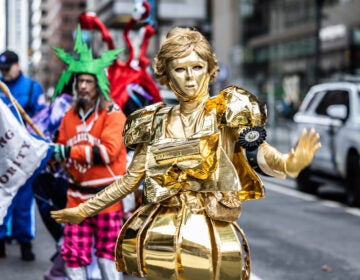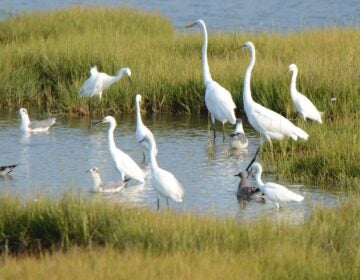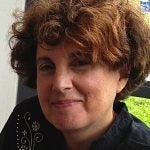Major new sculpture comes Princeton University campus
The Brooklyn studio of Ursula von Rydingsvard is redolent of cedar. For more than 30 years she has been incising monumental cedar forms using a hand-wielded chainsaw. Wearing black pants and turtleneck, von Rydingsvard, 73, runs up and down a flight of steel stairs all day, as well as climbing ladders to look inside her sculpture, before taking a taxi home to her husband, neuroscientist and Nobel Prize winner Paul Greengard.
All around are the 4-by-4-inch cedar beams the sculptor works with. Her abstract shapes are like vessels and suggest primitive dwellings, reminiscent of the barrack-like refugee camps she lived in as a child.
In fall 2015, a 19-foot commission was installed at the entrance to Princeton University’s Andlinger Center for Energy and the Environment. The building, to be dedicated in spring 2016, is designed by Billie Tsien and Tod Williams, the architects responsible for the Barnes Foundation in Philadelphia and the building that formerly housed the American Folk Art Museum in New York City. (Controversy was sparked when that architecturally significant building was razed by the Museum of Modern Art.) In honor of the installation, there is an exhibition of her work at the Princeton University Art Museum through Feb. 7.
Von Rydingsvard’s welcoming beacon to the Andlinger Center is her first to be fabricated primarily in copper. The full-sized maquette of stacked, texturized cedar beams shaped with a circular saw took six months to build. The finished piece of more than 3,000 copper pieces, each hammered by hand and painstakingly assembled around a metal armature, imitates the texture of the wooden model. The copper version was fabricated in nearby Greenpoint in the studio of metal artist Richard Webber.
Princeton University Art Museum Director James Steward has called the piece a “heroic and layered work of art by one of the greatest sculptors of our time.” It also “brings a new dimension to the collection distributed across our historic campus.”
“Copper is so soulful and responsive to all kinds of climate,” said von Rydingsvard. “It instinctively felt like the right thing to do.” She speaks in a softer voice than one might expect from a person wearing protective gear.
Guided by instincts and dreams, Von Rydingsvard does not start with a scaled-down model. Studio assistant Andria Morales explained how von Rydingsvard starts by sketching the outline on the ground. Once that is cut, she draws the profile for the next layer, and so forth, building up layer by layer. “It’s a process she’s developed over 35 years,” said Morales, who is one of six studio assistants. “She doesn’t do drawings but has an image in her head that is pretty compelling.”
As the texturized vessel takes form, von Rydingsvard is there with her pencil, making registration marks, continuing to build up from the ground. Each piece is screwed together as it rises, then unscrewed, reverse stacked, and glued. A numbering system helps to keep track of where everything goes and the final sculpture has no screws.
At Richard Webber’s studio there are three more assistants. The fabricator makes a paper template of every cedar 4-by-4, then creates it in copper. “Each copper panel is pounded into shape and affixed until the sculpture is mimicked in copper,” said Morales. “It’s labor intensive and highly skilled.” In fact, von Rydingsvard said this is the most labor-intensive work she has ever done.
The studio is home to large works that are between exhibitions in, for example, the Venice Biennale, Art Basel and the Frieze Art Fair. The number of shipping containers needed to transport these works overseas is staggering, not to mention the cranes needed to set them in place.
Although this is her first work in copper, von Rydingsvard has worked in bronze. “Bent Lace” is a wood model for a bronze that was acquired by the Museum of Modern Art. Another vessel in preliminary stages has been commissioned for M.I.T. “Nothing gets built without her hands on it, drawing, dictating steps,” said Morales.
One wall stretching from the front to the back of the building is comprised of von Rydingsvard’s smaller works – doodlings on paper, abstract forms of copper mesh, threads, beads, cut-out paper, lace, cast paper and photographs. On this wall she is working out ideas and establishing her own visual vocabulary. She calls them “experiments, little nothings.” If the artist did these alone, she would be remarkable.
Von Rydingsvard was born in Germany in 1942 to a Polish mother and a Ukrainian father who were forced to work as agricultural laborers under the Nazis during World War II. Between 1945 and 1950, Von Rydingsvard and her family – she was one of seven children — cycled through nine displacement camps in Germany, living in raw wooden barracks. When she was 9 years old her family emigrated to Connecticut.
When asked, von Rydingsvard is reluctant to discuss any of this. “One’s childhood affects one profoundly and it can never be erased, but I could not be specific as to how it manifests in my work.” She has said that in her family, using too many words made one suspect. “I drank from the world in visual means,” she said. Von Rydingsvard learned to ration smiles, and only laughed when “really appropriate… Working hard was the answer to life.”
While earning an MFA from Columbia University in 1975, von Rydingsvard discovered cedar as a medium. It reminds her of the wooden spoons, bowls, platters and shovels of her rural farming heritage.
But now she is excited about copper. “It’s a visually impressive thing in copper – the colors are beautiful and you want to touch it.” As with “Ona,” her work in bronze in front of Brooklyn’s Barclay Center, she wants people to touch it and interact with it, comparing it to rubbing the Buddha’s belly.
_________________________________________________
The Artful Blogger is written by Ilene Dube and offers a look inside the art world of the greater Princeton area. Ilene Dube is an award-winning arts writer and editor, as well as an artist, curator and activist for the arts.
The video below profiles Ursula von Rydingsvard working in her studio. It aired on State of the Arts on WHYY-TV.
WHYY is your source for fact-based, in-depth journalism and information. As a nonprofit organization, we rely on financial support from readers like you. Please give today.


